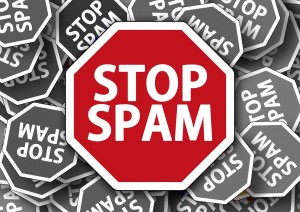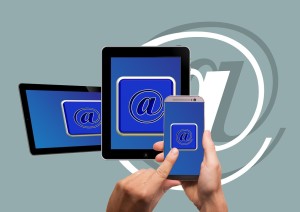6 Email Marketing Tips You Don’t Want To Do

Don’t use the wrong information
If you look online, there’s a lot of advice about email marketing. Some of it’s great, it will help you expand your brand’s mailing list and convert more people, but not all the advice out there is good for your business.
Some information out there can damage your brand’s image and cost you financially. Here are six of the worst email marketing tips.
Mistake No. 1 – Buying Email Addresses
This is possibly the worst email marketing tip you could ever read. In many countries, contacting people via e-mail without their permission is against legislation. For instance, in North America and Europe, you can’t contact someone for marketing purposes without their permission.
This is a type of spam that can have your mail server blacklisted, preventing you from contacting anyone, or you could receive a fine.
Email addresses should never be bought. For some countries, particularly Canada and US states, you should be using the Double Opt-in Subscription system to ensure that audiences want to receive your marketing information.
Mistake No. 2 – Send Emails To Everyone
Like with everything, consumers are all different. They’ll have different motivations, challenges, etc. that you need to discover and market to. Sending messages that have no appeal to your audience won’t convince them to buy.
Instead, you need to segment your audience and send relevant emails to each group. Segmentation can be based on demographics (age, location, gender, occupation, etc.) or behaviours (high spenders, recent website visitors, etc.)
Mistake No. 3 – Don’t Personalise
By not even mentioning the receiver’s name on their email, you are demonstrating your lack of care for the individual. How the audience is addressed can have a massive impact on conversions.
So, don’t skimp on personalisation.
As well as addressing them by name, think about their behaviours and incorporate that in the email copy.
Mistake No. 4 – Don’t A/B Test Your Content
Testing your content against your audience is an important aspect of marketing. One of the best ways to test content is to A/B test it (split testing). This is where you divide your audience into two groups and then make a small change to the content (i.e. different font). Then you can look at the results and see which content your audience prefers.
It’s best to always test your content with one small change at a time. Your marketing campaigns should be tested regularly, as you won’t know what the best optimisation for your brand is until you’ve exhausted all possibilities. Considering there are an unlimited number of combinations, this should mean there is never a time you won’t be testing.
Mistake No. 5 – Text All In Capital Letters
Have you ever read an email or text in capital letters? It seems like that the person is shouting to get your attention. This isn’t the image you want to portray; why would anyone buy from you if you are shouting at them? They are more likely to unsubscribe and never engage with your brand again.
While capital letters can be used to highlight something in an email, it should seldom be used. It’s much better to highlight content using bold lettering or a call to action.
Mistake No. 6 – Send Your Emails Whenever You Want
Another piece of poor advice is to not worry about what time you send emails. Firstly, this can damage visibility of your content. If you send them at busy periods, then your marketing messages will be lost in the sea of emails someone receives.
Secondly, if you send the emails at the wrong time, the email could be ignored, and they might not catch the email until the offer has expired.
Instead, you need to discover the best time for your brand to send emails. While there’s a lot of information available about this online, it might not be accurate. Every audience has different behaviours, and therefore, you should test your audience’s preferences.
Conclusion
Email marketing is one of the best ways to promote your business and convert customers. There is a lot of information online about the ‘best practices’ for email marketing, just be sure you are reading the best advice from a reputable source.
What bad advice have you been given? What happened to your business’ marketing campaigns as a result?
Let us know in the comments below.
Read post Post a Comment. Tagged in: email marketing advice, email marketing strategy, email marketing tips
3 Things You Need To Do To Avoid Sending Spam

How can you stop spam?
Email marketing has been plagued by one tactic that has always meant that businesses have to be careful how they conduct themselves: spamming. The practice, where customers are sent copious numbers of emails or are sent emails they never wanted, has led to legislation across the world. Some countries have included legislation that has meant that a company found sending spam could face hefty fines.
Spam isn’t exactly worthwhile. Unsolicited emails generally produce poorer results, low return on investment and damage brand reputation. While having a large enough list of names might offer better sales over one email – in the long term and after potential legal costs, the returns will be greatly diminished and your brand’s image ruined.
It is the company which is represented in the email, and not any third party supplier, who is responsible for the conduct of the email marketing campaign. Therefore, it is important that you know how to avoid sending spam. In theory, this only requires the careful implementation of three checks in your campaigns before you send a single email.
Here are the three checks you must complete to avoid sending spam and ensure your subscribers only get the messages they want.
1. Use Volunteers
The first and most important check is to ensure that your subscribers are only those that have signed up to your email marketing list in the first place. It is illegal to send emails to anyone who has not opted to receive emails.
While it is not a legal requirement in every country, the best way to ensure that this step is taken is to use the double opt-in methodology. This is when a subscriber signs up to your mailing list on your website or another platform (i.e. social media) and is then sent an email asking for their confirmation.
This helps to prevent your emails being marked as spam by ensuring that your subscribers know what their actions will result in. It also gives them a chance to say they don’t really want the emails or to prevent a third party from signing up people who have no interest in your products and services.
Many email marketing service providers make this system available as part of their service for free, so there is no complicated programming or other activity to undertake.
2. Segregate Email Subscribers
Another important action is to ensure that you are sending the right emails to your subscribers. This process, known as segmentation, is a vital step to ensure that your business’ contacts aren’t sent marketing messages that they aren’t interested in or that are irrelevant to them.
For instance, imagine you run an electronics store and you have a deal on a complimentary product to another. Sending it to everyone on the list will result in many people receiving the email who don’t have the original product and therefore, buying the complimentary product is not worthwhile. By segmenting the list so that only those who have bought the first product can result in better uptake and results.
Segmentation can take many different directions so it is best to understand your audience and use their behaviours to help you determine what segment they need to be assigned to.
3. Limit Your Email Campaigns
The more emails you send, the more like spammers you will appear. That is the simple conclusion from those that continuously send emails. Customers grow weary, even if all they do is delete your email. Therefore, consider how often you are creating your email campaigns and sending them out.
There isn’t an optimum number for the frequency of emails to send per week as it will differ between audiences, industries and products. However, if you are getting a high proportion of complaints or a high unsubscribe rate with your email campaigns, you might need to rethink your strategy.
If you segment your list, as mentioned above, this can also help reduce the number of emails each subscriber will receive.
Conclusion
Email marketing is highly effective when it comes to generating interest and sales for your brand’s products or services. But it is important that you ensure your company doesn’t practice spamming tactics. To comply with laws and best practice, it is best to use the double opt-in methodology, segment email lists and limit the frequency of emails. This way you will always seem legitimate and be in favour with those on your mailing list.
Read post Post a Comment. Tagged in: email marketing strategy, spam, SPAM laws
The Importance Of Keeping Your Email Subscribers In The Loop

Communicate with your clients to keep them on your list!
Email subscribers are an important asset to your marketing and sales team. They are the ones that are likely to purchase products and expand the reach of your brand. However, the effectiveness of your email marketing campaigns can be greatly reduced if you don’t have the right welcome email. This email, the first they receive, should have a lot of information contained within it, yet still be concise.
There are numerous benefits to having a proper welcome email for your subscription list. It can reduce unsubscribe rates, encourage higher interaction rates and the chance to reduce the time to sale. So what should you include in your welcome email? Here are a few suggestions:
Why They Are Receiving This Email
Sometimes, your subscribers won’t remember that they signed-up for your email list. This can make it awkward when you send your first email to them, and they then unsubscribe citing spam or that they hadn’t subscribed. Instead, by reminding them that they gave permission to receive your commercial email, you are reducing that risk.
A Thank You
A good first impression is not just important; it is essential. The right impression will help you generate a strong bond with your audience and encourage them to see you in a positive light. By saying thank you, you show that you are courteous and have manners.
Demonstrate Your Importance
People want to know why they should be reading your content. Therefore, give them some examples of why your content is important. There are several ways that you can achieve this:
- Direct them to previous campaigns containing useful information.
- Demonstrate the benefits of your products/services.
- Demonstrate content on your blog that might be useful.
- Include testimonials from others.
Set Email Expectations
Email expectations are an often forgotten but necessary element for retaining the trust of your audience. If you can demonstrate that you won’t just randomly email them whenever there is an offer but will only email them a specific number of times, then you can be sure they’ll stick around for longer. Of course, you have to keep that promise and not forget the level that you first set.
Ask For Feedback
Another key component of your welcome email should be asking for feedback. This can be taken in many different ways, either by the audience directly replying to you, or by setting up a survey online and taking the results from there. This opportunity can generate useful information, like where the subscriber found out about your brand, what content they would like to read and more personal details that can help segment them.
Website And Social Media Links
Don’t forget to place links to your website and social media profiles onto the email itself. This helps to build up a following over a wider set of communication channels and convert the prospect into a brand advocate.
Opt-Out Information
Remember to keep all the necessary, and legal information within your welcome message. This includes how the subscriber can opt-out of your mailing list, which should be an easy and quick (immediate) process, like clicking through on a link.
Reward Your Subscribers
The subscriber is an important asset to your company, show this by offering the new prospect a reward for subscribing. This could be a discount, free download or a humorous video that is visible only to subscribers.
Conclusion
Your subscription welcome email is a valuable marketing tool for your business. It helps to please prospects that you might not have met and can help to keep them engaged with your brand and more receptive to your marketing messages. By using the tips above, you can generate a highly engaging welcome message to entice audiences to consider your products or services.
How do you keep email subscribers? Do you send a welcome email?
Let us know in the comments below.
Read post Post a Comment. Tagged in: email marketing strategy, email subscribers, email welcome message, opt-in protocols
Determining Why Prospects Sign Up To Your Newsletter

Why are people signing up to your email list?
When you have an online business it is important to generate an email marketing list. According to numerous research projects, they are one of the best online sellers. The reason for this is that emails can be personalised to the reader, rather than generic social media, blog, video or podcast content that is created for the general audience.
One of the ways that you can customise your email marketing newsletter is by inserting the name of the recipient into your email. Doing this for the subject line and at the top of the email when addressing the recipient has been proven to increase open rates, avoid spam filters and increase conversions.
However, this isn’t the only way to increase these metrics. There is another, more successful customisation that will help your business achieve more from its email marketing campaigns: sending relevant content that the customer wants. The problem that many businesses face is how do they learn what information new signups want to receive?
Learning The Motivation
It’s all about learning the motivation of your business’ latest prospects for signing-up. By tapping into their motivation not only will you gain further insight into what they are interested in, but also see at what stage of the purchasing path they are at. The more urgent their need, the more likely they are going to want to speak to your sales team or receive that highly promotional email.
To gauge their motivation, you first need to understand that there are two types of marketing motivation: need and want. A customer might want to have something, but that doesn’t mean they can have it. For instance, they might want to go on holiday to a five star hotel but they can only afford a budget equivalent.
In contrast, a need is an urgent motivation where customers have to get something otherwise it causes problems. For instance, a customer might need a locksmith to repair the lock on their door.
Motivation can often be determined by the pages of your website a customer is looking at. If they are viewing your product information pages only, then it is more likely a want motivation as there is no urgency in their actions. Alternatively, if they are looking at prices and delivery charges, etc – then there is likely a need for motivation.
Learning What They Need Or Want
Both need and want customers can be marketed to. The need customers are just those that are further down the sales funnel and require less effort to convert. However, even with a need prospect you should find out what they want. This can’t always be determined by where they’ve been on your site. Either you have too many visitors / not the right software to marry up signup details with visitor activities or you don’t have specific pages and they were looking at all your products.
So what you should do is find a way to generate more prospect knowledge. One way of doing this is to use topic specific downloadable content. By offering many different ebooks or whitepapers that range in topics on all your products, you can determine what the prospect would like by what they’ve downloaded. For instance, if they’ve downloaded the window installation document, you can be sure that they’re interested in new windows.
Research by HubSpot has found that the more downloadable content you have the greater your lead generation is. The results also seem to be exponential, so generating lots of this form of content is almost invaluable.
With this information, you can then create email marketing content that can target their specific interests. This helps reengage your audience and attract more of them to click through to your website and make a purchase.
Conclusion
Knowing why someone has signed up to your mailing list includes finding out why they have signed up, what they want to know more about and how urgent the demand is. Then you can produce tailored content for them and can decide how quickly you should move towards the sale before a competitor beats you to it.
How do you determine what the customer wants? Do you segregate your email marketing lists?
Let us know in the comments.
Take Action:
- Create at least 5 downloadable ebooks to capture email addresses.
- Segregate your email marketing list based on urgency of product need and desire.
Read post Post a Comment. Tagged in: email marketing strategy, email subscribers, Signups, subscriber behaviour
How Email Marketing Can Help You On Black Friday
 Black Friday is quickly approaching and businesses across the world have begun thinking about what offers they can give their customers. Black Friday is one of the biggest shopping days in the retail calendar and the revenue generated continues to rise each year.
Black Friday is quickly approaching and businesses across the world have begun thinking about what offers they can give their customers. Black Friday is one of the biggest shopping days in the retail calendar and the revenue generated continues to rise each year.
One of the main drivers for sales on the day was email marketing. According to retailers, a fifth of all sales originated from emails sent by retailers. So how can you utilise your email lists to receive your share of the day’s sales?
1. Build Your Email Marketing List
The first thing you need to do is ensure that your email marketing list is as strong as possible. This means gaining as many new leads as you can. Offering small discounts for signing up to your email list or promising subscribers exclusive offers can help boost signup rates.
2. Maintain Your Email Marketing List
The next step is to trim down your email marketing list. Remove those contacts that haven’t opened an email for six months and those who haven’t clicked through to your website in about three months. These are people who aren’t interested in your marketing message and therefore, aren’t worth emailing. Considering that the number of contacts on your list can affect the fee you are paying, you can save money by removing the dead wood from your mailing list.
3. Plan Your Offers
It is not wise to plan Black Friday at the last minute. Instead, you should be concentrating on developing the offers in advance. This is so you can warm up your audience to Black Friday and start promoting the offers that will be available on the day. There are several elements to this. These include:
- Planning what deals will be available on the day and through to Cyber Monday.
- Planning how you are going to market these deals.
- Creating a series of emails to promote the day and the offers.
- Creating extra capacity on your website’s bandwidth (so you don’t go down during the day).
4. Start Segmenting Your Audience
This is the most critical aspect of your email marketing campaign for Black Friday. You are likely to have numerous deals available for your audience across the store. However, only a few of these will be applicable to each customer. Getting the right message to your audience will be important to generate the best results.
To do this you should segment the list completely. Look at what customers have taken an interest in. Include cart abandonment, what they’ve viewed, what they’ve clicked on before and previous purchases; then use these to segment your email marketing list. Each segment needs to be matched with a series of offers that will be available on the day.
5. Ensure Everything Is Mobile Friendly
Black Friday 2014, saw one statistic that should be carefully considered – mobile marketing. Many of the sales from emails were also from mobile devices. Trending over the last few years has seen m-commerce take off. Ensure your emails are mobile friendly to be ahead of your competitors.
6. Start Promoting The Day
The first few emails that need to go out don’t need to mention any specific details. They can be a simple message at the bottom of your current email copy informing customers that you will have promotions available on Black Friday.
7. Pump Up The Promotions
During the week (or two) before Black Friday you’ll want to start getting subscribers excited by detailing some of the offers that you will have available on the day. These messages should be sent out at least once every couple of days to really increase interest and get subscribers anxious about getting the deals. The more interest you can create, the quicker the sales will come in on Black Friday.
If you are able to get the segmentation and deals just right, you can then start to sell just after midnight and see a steady stream of revenue throughout the day.
Conclusion
Black Friday is one of the most important retail shopping days in the world. It offers customers a chance to grab a deal and you the chance to earn a lot of revenue. Email marketing is by far one of the best performers for the day. By preparing in advance, you can reap the rewards and gain substantial revenue from the day.
How are you preparing for Black Friday? Have you started preparations yet?
Let us know in the comments.
Take Action:
- Prepare your email marketing list.
- Create promotional content.
- Start promoting your Black Friday deals.
Read post Post a Comment. Tagged in: black friday, email marketing strategy, sales
Why Mobile-Friendly Emails Are More Important Than Ever
 The email marketing landscape is forever changing. As such, you need to be changing your tactics with the times and ensure your emails are designed with the latest best practices in mind. One of the most important best practices is mobile friendly email designs.
The email marketing landscape is forever changing. As such, you need to be changing your tactics with the times and ensure your emails are designed with the latest best practices in mind. One of the most important best practices is mobile friendly email designs.
This isn’t a new concept. For years now users have been able to read their emails online and it has helped to cement the importance of email marketing as an effective sales channel. By being able to reach customers at any time because they can access messages while out and about, the effectiveness of campaigns has grown. It has also allowed businesses to use tactics such as hurrying orders where retailers only have offers available for an hour or two before they go. Before mobile email, the majority of consumers would miss these offers.
So businesses have to consider mobile friendly emails if they want to be successful.
Growing Audience
When emails first became enabled on mobiles the uptake was poor. The devices were simply not powerful enough to connect to the internet and the cost for downloading emails was very expensive. However, technology has advanced recently to the point where reading an email on a mobile device is just as easy as reading an email on a desktop. This is why more people are now reading their emails first on their mobile devices.
The number of mobile devices has also expanded. Previously there were just a few devices that were compatible, now there is everything from Blackburry, iPhone and tablets that are able to connect to the internet and read emails. As more technology, like the new wrist devices, become mainstream, there will be even more options for consumers to read their emails.
Customers Like Mobile Friendly Emails
Research has shown that those who view emails on their mobile devices are very fussy. They like to have emails that are easy to read on the devices. If they aren’t mobile friendly, often they will just delete the email and not even give it a second chance on a desktop later.
At the same time, if you do optimise your emails for mobile devices the uptake of your message will be greater across all devices. Emails optimised for mobile devices tend to be simpler and require less memory. This allows them to be downloaded faster. It also focuses you on developing a strong message that doesn’t rely on a flashy image.
So How Can You Create A Mobile Optimised Email?
There are several elements to consider when creating a mobile friendly email. Here is our quick checklist for you to consider.
1. Reduce Image File Size
Views can be increased by 94% if you deliver content that contains a compelling image against one without an image. Even though technology has improved for mobile internet speed, large image files are still going to be slow to download. A delay of just one second can cost you 7% of your conversions.
So reduce your image files to reach a larger audience. You can do this by as much as 80% without affecting the quality of your image.
2. Resize Your Image
When you don’t resize an image it will look terrible on the screen and this will affect the user’s experience. A poor experience will result in a lost chance of a sale. So instead change the image properties so they are the same size as the width of a mobile’s screen.
3. Increase Button Size
It is harder to be accurate when selecting buttons on a mobile’s touch screen. To help your audience get around this you need to change the size of your call-to-action button. The recommended size is about 47-57 pixels.
4. Use Your Own Template Or Invest In A Responsive Template
There are templates out there that are responsive to the device that the email is opened up on. Using one of these will make your campaigns easier to design and deliver. However, if you can’t find one you like, you need to code your own.
Conclusion
Email marketing is a powerful sales tool, but you need to stay up-to-date with the latest trends. If you don’t, then you can lose out on potential sales that can harm your future business prospects.
Do you use mobile friendly email templates? What do you do when you receive one that isn’t optimised for email?
Let us know in the comments.
Take action:
- Optimise images on your emails for mobile devices.
- Improve call to action buttons on your email copy.
- Look at our responsive templates.
Read post Post a Comment. Tagged in: email marketing campaigns, email marketing strategy, mobile design, mobile emails, mobile optimised